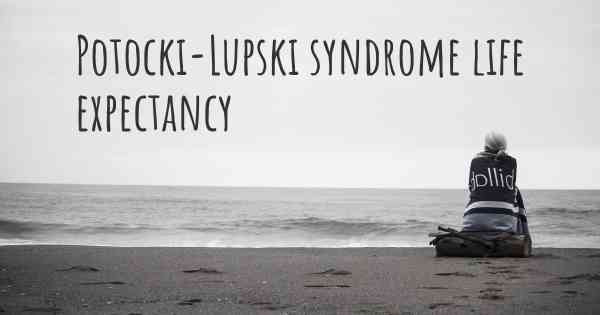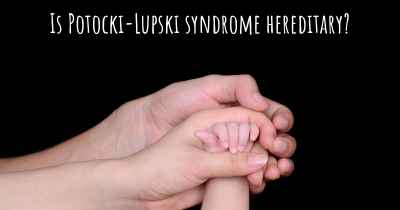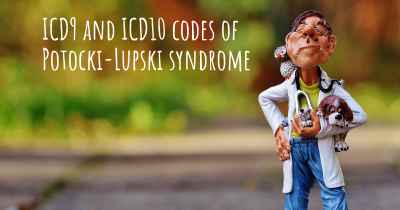What is the life expectancy of someone with Potocki-Lupski syndrome?
Life expectancy of people with Potocki-Lupski syndrome and recent progresses and researches in Potocki-Lupski syndrome

Potocki-Lupski syndrome is a rare genetic disorder caused by a duplication of a specific region of chromosome 17. The syndrome is associated with a wide range of symptoms, including developmental delays, intellectual disability, autism spectrum disorder, and various physical abnormalities.
As for life expectancy, it is challenging to provide a specific answer as it can vary significantly depending on the individual and the severity of their symptoms. Some individuals with Potocki-Lupski syndrome may have a relatively normal lifespan, while others may experience more severe health complications that could potentially impact their life expectancy.
It is crucial for individuals with Potocki-Lupski syndrome to receive appropriate medical care, early intervention, and ongoing support to manage their symptoms and optimize their quality of life.
Potocki-Lupski syndrome (PTLS) is a rare genetic disorder caused by a duplication of a specific region of chromosome 17. It was first identified in 2000 and is characterized by a variety of physical, developmental, and intellectual disabilities. While there is limited information available on the life expectancy of individuals with PTLS, it is important to note that each case is unique and can vary significantly.
Physical Features:
PTLS is associated with a range of physical features, including distinctive facial characteristics such as a prominent forehead, widely spaced eyes, a broad nasal bridge, and a thin upper lip. Other physical abnormalities may include skeletal anomalies, such as scoliosis or joint hypermobility, as well as heart defects and gastrointestinal issues.
Developmental and Intellectual Disabilities:
Individuals with PTLS often experience developmental delays, including delayed motor skills such as sitting, crawling, and walking. They may also have speech and language delays, as well as intellectual disabilities that can range from mild to moderate. Behavioral issues, such as attention deficit hyperactivity disorder (ADHD) and autism spectrum disorder (ASD), may also be present.
Medical Concerns:
PTLS individuals may be prone to certain medical concerns that can impact their overall health and potentially affect life expectancy. These can include recurrent infections, respiratory issues, sleep disturbances, and feeding difficulties. It is crucial for individuals with PTLS to receive regular medical care and appropriate interventions to manage these potential complications.
Life Expectancy:
Due to the rarity of PTLS and the limited available data, it is challenging to provide a precise life expectancy range for individuals with this syndrome. The life expectancy of someone with PTLS can be influenced by various factors, including the severity of physical and intellectual disabilities, the presence of associated medical conditions, and the quality of medical care and support received.
It is important to approach the topic of life expectancy with sensitivity, as it can vary greatly from person to person. Some individuals with PTLS may have a relatively normal life span, while others may face more significant health challenges that could potentially impact their longevity.
Support and Management:
While there is no cure for PTLS, early intervention and ongoing support can greatly improve the quality of life for individuals with this syndrome. A multidisciplinary approach involving medical professionals, therapists, educators, and support networks can help address the specific needs and challenges faced by individuals with PTLS.
Conclusion:
Potocki-Lupski syndrome is a complex genetic disorder that can present with a wide range of physical, developmental, and intellectual disabilities. The life expectancy of individuals with PTLS is difficult to determine due to the limited available data and the individual variability of the syndrome. It is crucial for individuals with PTLS to receive appropriate medical care, interventions, and support to optimize their overall well-being and quality of life.
Posted May 2, 2017 by Julie Centeno 1425








